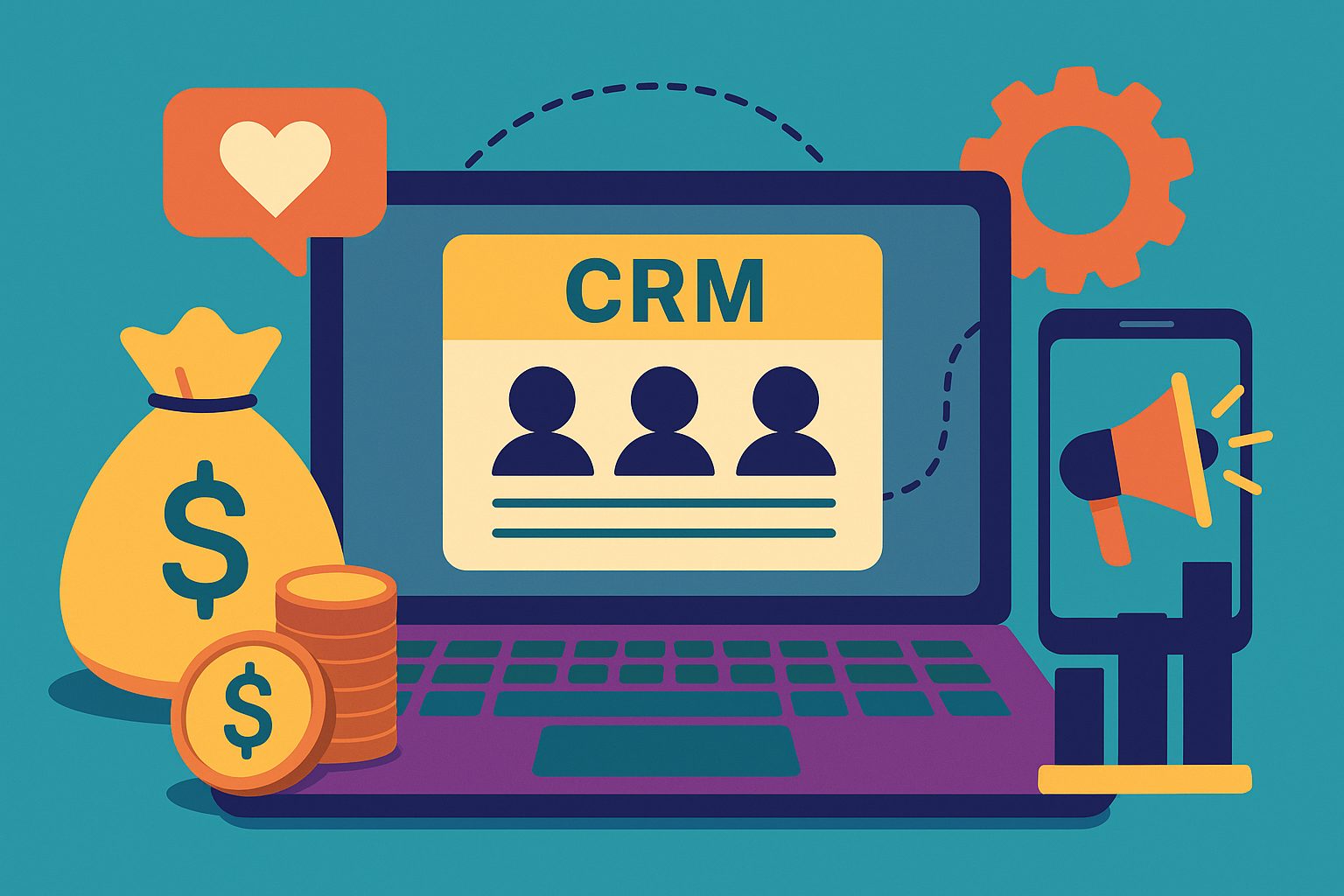Data-Driven Decisions Start with Connection
Launching a crowdfunding campaign is like setting a rocket into motion. You’ve built the vehicle, fueled it with your story and vision, and now it’s headed toward orbit. But how do you know if you’re actually gaining altitude—or losing momentum? That’s where analytics comes in. Without connected analytics tools, your campaign operates in the dark. You’re guessing instead of measuring, hoping instead of adjusting. But when your analytics tools are properly integrated into your crowdfunding dashboard, you gain crystal-clear visibility. You start seeing where your traffic comes from, which pages drive pledges, which social posts convert, and which audience segments are most engaged. In short, you transform from a hopeful creator into a strategic leader. And it all begins with connection.
Why Analytics Integration is a Campaign Game-Changer
Crowdfunding success hinges on momentum. The ability to monitor performance in real time—traffic spikes, pledge dips, referral conversions—is what allows creators to act fast and iterate on the fly. Analytics tools help you identify what’s working and what’s not, so you can allocate energy and resources where they matter most. When integrated properly, analytics empowers you to test different headlines, track campaign video engagement, refine your call-to-action strategy, and identify drop-off points in the pledge flow. Instead of launching blind, you get a dashboard full of insight. The earlier you integrate analytics into your crowdfunding dashboard, the faster you can turn insights into improvements—and improvements into results.
Setting Up the Basics with Google Analytics
One of the first tools every campaign creator should connect is Google Analytics. It’s free, powerful, and flexible enough to give you detailed insights into your campaign traffic. Most crowdfunding platforms—like Kickstarter, Indiegogo, and custom-built landing pages—allow for the integration of Google Analytics either directly or through custom script insertion. Once connected, you can track user behavior from the moment they land on your page to the moment they convert. You can view where your visitors come from—search engines, social media, email campaigns, or referral links—and how long they stay. More importantly, you can monitor bounce rates, session durations, and conversion events to understand how well your content is performing. Connecting Google Analytics means gaining access to your campaign’s digital heartbeat. It tells you when to celebrate and when to pivot.
Using UTM Parameters for Deeper Campaign Insight
A crucial part of campaign analytics is attribution—knowing which link drove which visitor and which visitor became a backer. That’s where UTM parameters come into play. These small snippets of text attached to your URLs allow you to identify the exact source, medium, and campaign that brought someone to your page. When combined with Google Analytics or other tools, UTMs give you visibility into the performance of individual social media posts, email links, influencer collaborations, and paid ads. You’ll no longer wonder whether your Tuesday Instagram Story or your Thursday email generated more clicks. The data will tell you. Set up consistent UTM tagging across all outbound links and make sure your analytics tool is reading them properly. This integration elevates your dashboard from a summary of traffic into a complete story of how each visitor found their way to your campaign.
Adding Meta Pixel for Social Ad Tracking
If you’re using Facebook or Instagram advertising to drive traffic to your crowdfunding campaign, integrating Meta Pixel is non-negotiable. This tiny piece of code allows you to track user behavior after someone clicks an ad—from viewing your campaign page to completing a pledge. It also lets you build retargeting audiences, track return on ad spend (ROAS), and optimize your campaigns based on actual performance data. Many crowdfunding platforms allow you to insert your Meta Pixel through their backend, while others require a more manual setup using custom code blocks or third-party tools. Once installed, the pixel can begin sending real-time behavioral data back to your ad manager, helping you refine targeting, adjust creative, and increase conversions. Without Meta Pixel, you’re essentially flying blind with paid traffic. With it, every dollar spent becomes a learning opportunity.
Unlocking the Power of Google Tag Manager
For creators juggling multiple analytics tools—like Hotjar, Google Analytics, conversion pixels, and affiliate tracking—Google Tag Manager becomes your best friend. It’s a centralized platform that lets you deploy and manage all your tracking scripts without touching code every time. Instead of copying and pasting snippets into your crowdfunding page manually, you drop in one container code and manage everything from the Tag Manager dashboard. This gives you flexibility, control, and speed—especially critical when campaign timelines are tight. You can schedule tags, adjust tracking conditions, and even experiment with different measurement setups without waiting on a developer. Tag Manager makes it easier to test hypotheses, launch new integrations, and keep everything running smoothly. When you’re in the middle of your campaign and need to move fast, this tool keeps you agile without compromising accuracy.
Real-Time User Behavior with Heatmaps and Session Recordings
While standard analytics tell you where users come from and what they click, behavior tools like Hotjar and Crazy Egg show you how they engage. By integrating these tools into your crowdfunding dashboard or pre-launch page, you can generate heatmaps, scroll maps, and session recordings. These insights are gold. They reveal where visitors are lingering, what they’re ignoring, and where they’re dropping off. You may discover that your backer reward chart is buried too low on the page or that your video isn’t getting watched past the first 15 seconds. Once you see actual user behavior, you can redesign, reposition, or reframe your messaging in real time. These integrations are especially powerful during the first few days of your launch, when every tweak can mean a meaningful uptick in conversions.
Email Analytics That Link Back to Pledges
Most creators use email marketing during their campaigns—but too few connect those efforts directly to campaign outcomes. Integrating your email platform with your analytics setup changes that. Whether you use Mailchimp, ConvertKit, ActiveCampaign, or another service, make sure each email contains properly tagged links using UTM parameters. This way, your analytics dashboard can show you how many subscribers clicked through and pledged. Some platforms even allow deeper integrations that track user-level activity. Did a specific subject line convert more premium backers? Did your launch day sequence generate more conversions than your stretch goal announcement? With the right setup, your email analytics become a central part of your campaign intelligence—not just a sidebar. This empowers you to test, refine, and amplify your messaging throughout the campaign lifecycle.
Understanding Metrics That Actually Matter
Not all analytics are created equal. While page views and open rates are nice, what really matters are the metrics that align with your goals. These might include conversion rate, cost per acquisition (CPA), average pledge amount, and page engagement time. When you integrate your analytics tools with clarity and purpose, your dashboard stops overwhelming you with noise and starts offering true guidance. Focus on metrics that answer actionable questions. Where are people dropping off? What traffic sources convert best? Which campaign days see the highest momentum? What content or rewards trigger larger pledges? When your analytics tools are properly connected and customized, these answers become visible—and visibility breeds smart decision-making.
Combining Analytics with Crowdfunding Platform Data
Most crowdfunding platforms offer built-in analytics—basic dashboards showing daily funding, referral sources, and top-performing reward tiers. But when you integrate external tools, you start seeing patterns those native dashboards miss. For example, you might learn that your highest-value backers didn’t come from the platform’s discovery feed, but from a specific influencer or niche newsletter. You might notice that most pledges happen within five minutes of video playback—or that reward tier three has a high abandonment rate after scroll. By combining your platform’s native insights with external analytics tools, you create a 360-degree view of your campaign’s performance. And the more comprehensive your view, the more confidently you can course-correct.
Simplifying the Process with Integration Tools
For non-technical creators, the idea of connecting multiple analytics tools can feel overwhelming. That’s where tools like Zapier, Integromat (now Make), and Segment come in. These services act as bridges between your crowdfunding platform and your analytics stack, automating data transfer without complex coding. Want to send new pledger data to your CRM and email tool while simultaneously tagging a conversion in Google Analytics? With these tools, it’s possible—often in a few clicks. They’re especially helpful for creators using custom-built campaign pages or platforms with limited native integrations. A few hours spent setting up these automations can save you days of manual tracking later. And during a campaign, time saved is energy gained.
Preparing Before Launch for Maximum Impact
The worst time to connect analytics tools is after you’ve already launched. To get the most out of your integrations, prepare everything during the pre-launch phase. Create your Google Analytics property, set up your UTM structure, test your pixels, and verify that data is flowing correctly into your dashboards. Run test traffic through your campaign preview or landing page and confirm that the sources and behaviors are being tracked accurately. Check your heatmaps, session recordings, and email campaign analytics to make sure everything syncs. By the time you hit launch, your analytics system should be running like a well-oiled machine. This prep work gives you confidence that every move you make post-launch is backed by insight, not instinct.
Scaling Campaigns with Predictive Insights
Once your analytics tools are firing in harmony, you can begin to forecast performance. Analytics isn’t just about what’s already happened—it’s about what could happen. With predictive tools like Google Analytics 4, machine learning algorithms can suggest when you’re likely to reach your goal, which segments might churn, or which sources are cooling off. This allows you to launch mid-campaign initiatives with laser focus—such as doubling down on high-converting partnerships or pausing ad spend on underperforming audiences. Predictive insights become especially powerful in the second half of your campaign, when smart moves determine whether you plateau or surge. The more you measure, the more you can anticipate. And anticipation is the edge every creator needs.
Turning Data Into a Campaign Superpower
Integrating analytics tools into your crowdfunding dashboard isn’t just a technical task—it’s a mindset shift. It’s the decision to move from reactive to proactive, from storytelling alone to strategic storytelling supported by numbers. When your dashboard becomes a source of clarity rather than confusion, your decisions get sharper. Your messaging becomes smarter. Your outcomes become stronger. You stop wondering what worked and start knowing what worked. And with that knowledge, you gain the confidence to launch bigger, faster, and more boldly. In the world of crowdfunding, passion lights the fire—but analytics fans the flame.




